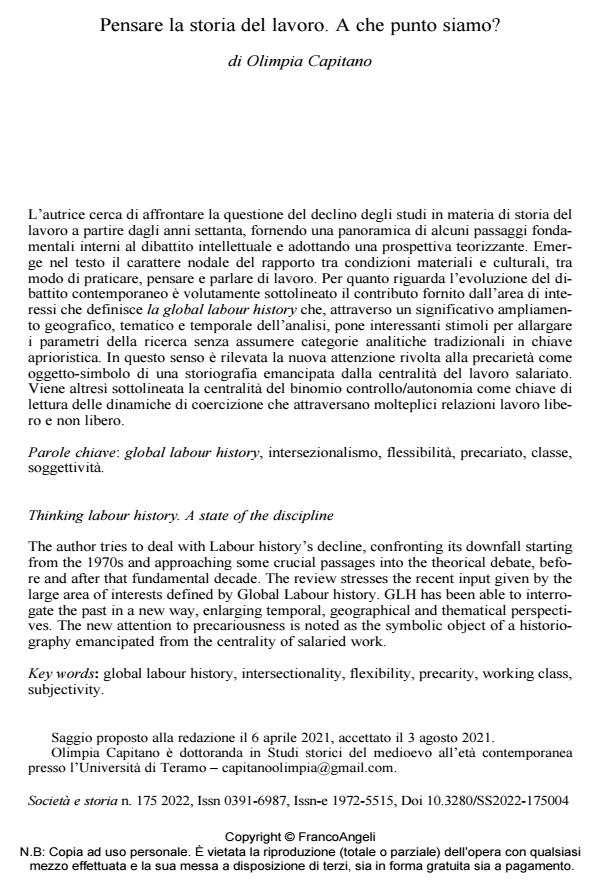Thinking labour history. A state of the discipline
Journal title SOCIETÀ E STORIA
Author/s Olimpia Capitano
Publishing Year 2022 Issue 2022/175
Language Italian Pages 21 P. 105-125 File size 616 KB
DOI 10.3280/SS2022-175004
DOI is like a bar code for intellectual property: to have more infomation
click here
Below, you can see the article first page
If you want to buy this article in PDF format, you can do it, following the instructions to buy download credits

FrancoAngeli is member of Publishers International Linking Association, Inc (PILA), a not-for-profit association which run the CrossRef service enabling links to and from online scholarly content.
The author tries to deal with Labour history’s decline, confronting its downfall starting from the 1970s and approaching some crucial passages into the theorical debate, before and after that fundamental decade. The review stresses the recent input given by the large area of interests defined by Global Labour history. GLH has been able to interrogate the past in a new way, enlarging temporal, geographical and thematical perspectives. The new attention to precariousness is noted as the symbolic object of a historiography emancipated from the centrality of salaried work.
Keywords: global labour history, intersectionality, flexibility, precarity, working class, subjectivity
- Pensare la storia del lavoro domestico. A che punto siamo? Spunti di riflessioni a partire da alcune recenti pubblicazioni Olimpia Capitano, in SOCIETÀ E STORIA 184/2024 pp.349
DOI: 10.3280/SS2024-184005 - La storia economica contemporanea in quaranta anni di "Società e storia" Marco Doria, in SOCIETÀ E STORIA 178/2023 pp.783
DOI: 10.3280/SS2022-178007
Olimpia Capitano, Pensare la storia del lavoro. A che punto siamo? in "SOCIETÀ E STORIA " 175/2022, pp 105-125, DOI: 10.3280/SS2022-175004